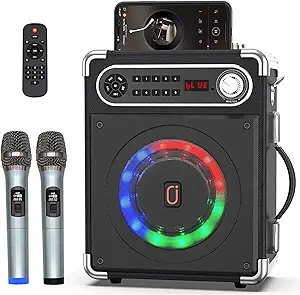A Comprehensive Guide to Buying the Best Microphone
Overview
Microphones are an essential tool for recording high-quality audio, whether for professional or personal use. With so many different types and features available, it can be overwhelming to choose the right one. This guide will provide you with all the information you need to make an informed decision when buying a microphone.
Types
1. Dynamic Microphones: These are the most commonly used microphones and are ideal for recording loud sounds like drums and electric guitars.
2. Condenser Microphones: These are more sensitive and produce high-quality sound, making them ideal for recording vocals and acoustic instruments.
3. Ribbon Microphones: These are more delicate and produce a warm, natural sound, making them ideal for recording strings and woodwind instruments.
4. USB Microphones: These are convenient and easy to use, as they can be plugged directly into a computer or laptop. They are ideal for podcasting and voiceovers.
Key Considerations
1. Polar Pattern: This determines the directionality of the microphone and can be omnidirectional, cardioid, or bidirectional.
2. Frequency Response: This refers to the range of frequencies that the microphone can pick up and is measured in Hertz (Hz).
3. Sensitivity: This refers to how well the microphone can pick up sound and is measured in decibels (dB).
4. Noise Floor: This refers to the level of background noise that the microphone picks up and is measured in decibels (dB).
Features
1. Shock Mount: This helps to reduce vibrations and unwanted noise.
2. Pop Filter: This helps to reduce plosives and other unwanted sounds.
3. Phantom Power: This is required for condenser microphones and provides power to the microphone through the XLR cable.
4. Headphone Jack: This allows you to monitor the audio as you record.
Prices
Microphones can range in price from under $50 to over $1000. The price will depend on the type of microphone, features, and quality.
Tips
1. Consider your recording environment and the type of sound you want to capture.
2. Choose a microphone with a polar pattern that suits your needs.
3. Look for a microphone with a low noise floor to reduce unwanted background noise.
4. Consider purchasing a shock mount and pop filter to improve the quality of your recordings.
FAQs
Q: What is the best type of microphone for recording vocals?
A: Condenser microphones are ideal for recording vocals as they are more sensitive and produce high-quality sound.
Q: Can I use a dynamic microphone for recording acoustic instruments?
A: Yes, you can use a dynamic microphone for recording acoustic instruments, but a condenser microphone will produce higher quality sound.
Q: Do I need phantom power for a dynamic microphone?
A: No, phantom power is not required for dynamic microphones as they do not require external power.
Q: Can I use a USB microphone for recording music?
A: Yes, you can use a USB microphone for recording music, but the quality may not be as high as using a professional microphone with an audio interface.
Conclusion
In conclusion, choosing the right microphone is essential for recording high-quality audio. Consider the type of microphone, key considerations, features, and price when making your decision. By following these tips and guidelines, you can find the perfect microphone for your needs.














